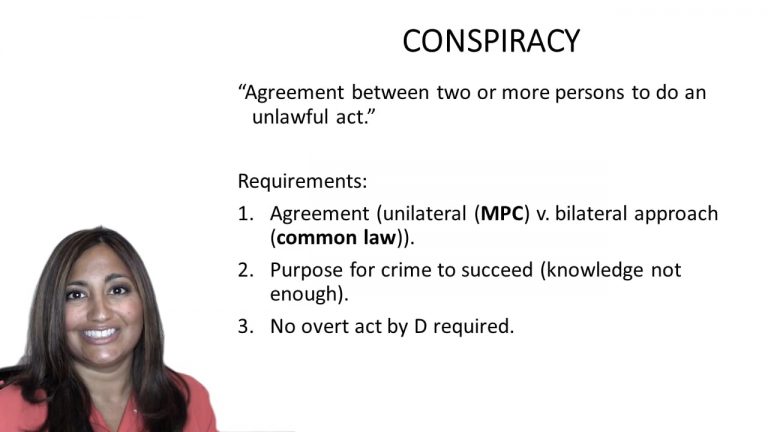SmartBrief
Confirm favorite deletion?
Criminal Law Keyed to Ohlin
Commonwealth v. Nee
Citation:
458 Mass. 174, 935 N.E.2d 1276 (2010)Facts
The defendant, a high school student, was convicted of conspiracy to commit murder.
At trial, other students, Farley and Sullivan, testified that the defendant told them that he had a plan to “shoot up” the school and asked whether they were interested in joining him. On another occasion, the defendant asked Tobin Kerns, another student, whether Kerns would be interested in joining his plan. Kerns and the defendant discussed the plan with Sullivan and asked whether he would be interested in participating. Kerns and the defendant, along with Farley, Sullivan, and perhaps one other student, were to shoot and kill targeted students, teachers, and other staff at the school using an assortment of automatic and semiautomatic weapons. They would set trip wire explosives, line the hallway with napalm, and place bicycle locks on the main and rear doors to the school to prevent escape. The defendant told Farley that “he wanted to be exactly like Eric Harris,” one of the perpetrators of the Columbine mass murder.
Kerns and the defendant developed a list of supplies needed, and a list of specific names that they planned to kill. They labeled a map with entry points and other information relevant to the planned attack. They also attempted to make some of the explosives.
The defendant lived in Kerns’ house for approximately one month in the late spring or early summer of 2004. He left when Kerns was hospitalized after attempting suicide. The defendant said that the people at the hospital were “brainwashing” Kerns and that he should not be there, and suggested “breaking [Kerns] out.”
In September, 2004, the defendant approached an officer and told her that “Kerns was scaring him.” The officer arranged a meeting for the defendant at his request. He informed the officers that Tobin Kerns had developed an elaborate plot to “blow up the school.” The defendant described the plot in detail. Over the course of the several hours he spoke with the police officers, the defendant did not indicate that he had planned to participate with Kerns in the attack. Rather, the defendant led the officers to believe that Kerns “developed this whole thing himself and [the defendant] was just a follower,” who was not in concert with Kerns.
The defendant appealed his conviction, arguing that the trial judge erred in refusing to recognize and apply the renunciation defense.
Only StudyBuddy Pro offers the complete Case Brief Anatomy*
Access the most important case brief elements for optimal case understanding.
*Case Brief Anatomy includes: Brief Prologue, Complete Case Brief, Brief Epilogue
- The Brief Prologue provides necessary case brief introductory information and includes:
Topic:
Identifies the topic of law and where this case fits within your course outline.Parties:
Identifies the cast of characters involved in the case.Procedural Posture & History:
Shares the case history with how lower courts have ruled on the matter.Case Key Terms, Acts, Doctrines, etc.:
A case specific Legal Term Dictionary.Case Doctrines, Acts, Statutes, Amendments and Treatises:
Identifies and Defines Legal Authority used in this case.
- The Case Brief is the complete case summarized and authored in the traditional Law School I.R.A.C. format. The Pro case brief includes:
Brief Facts:
A Synopsis of the Facts of the case.Rule of Law:
Identifies the Legal Principle the Court used in deciding the case.Facts:
What are the factual circumstances that gave rise to the civil or criminal case? What is the relationship of the Parties that are involved in the case.Issue(s):
Lists the Questions of Law that are raised by the Facts of the case.Holding:
Shares the Court's answer to the legal questions raised in the issue.Concurring / Dissenting Opinions:
Includes valuable concurring or dissenting opinions and their key points.Reasoning and Analysis:
Identifies the chain of argument(s) which led the judges to rule as they did.
- The Brief Prologue closes the case brief with important forward-looking discussion and includes:
Policy:
Identifies the Policy if any that has been established by the case.Court Direction:
Shares where the Court went from here for this case.

 10m 19s
10m 19s